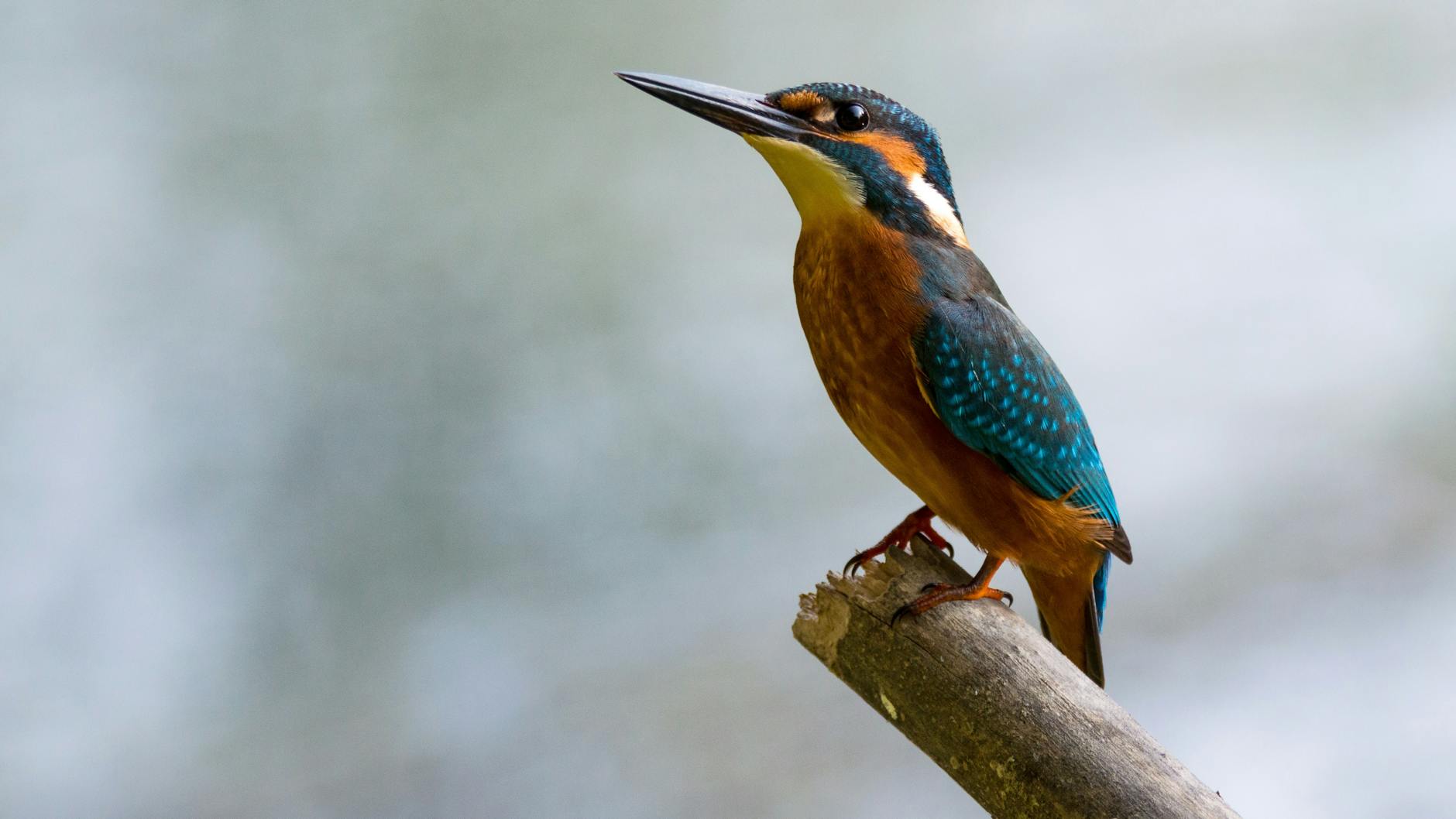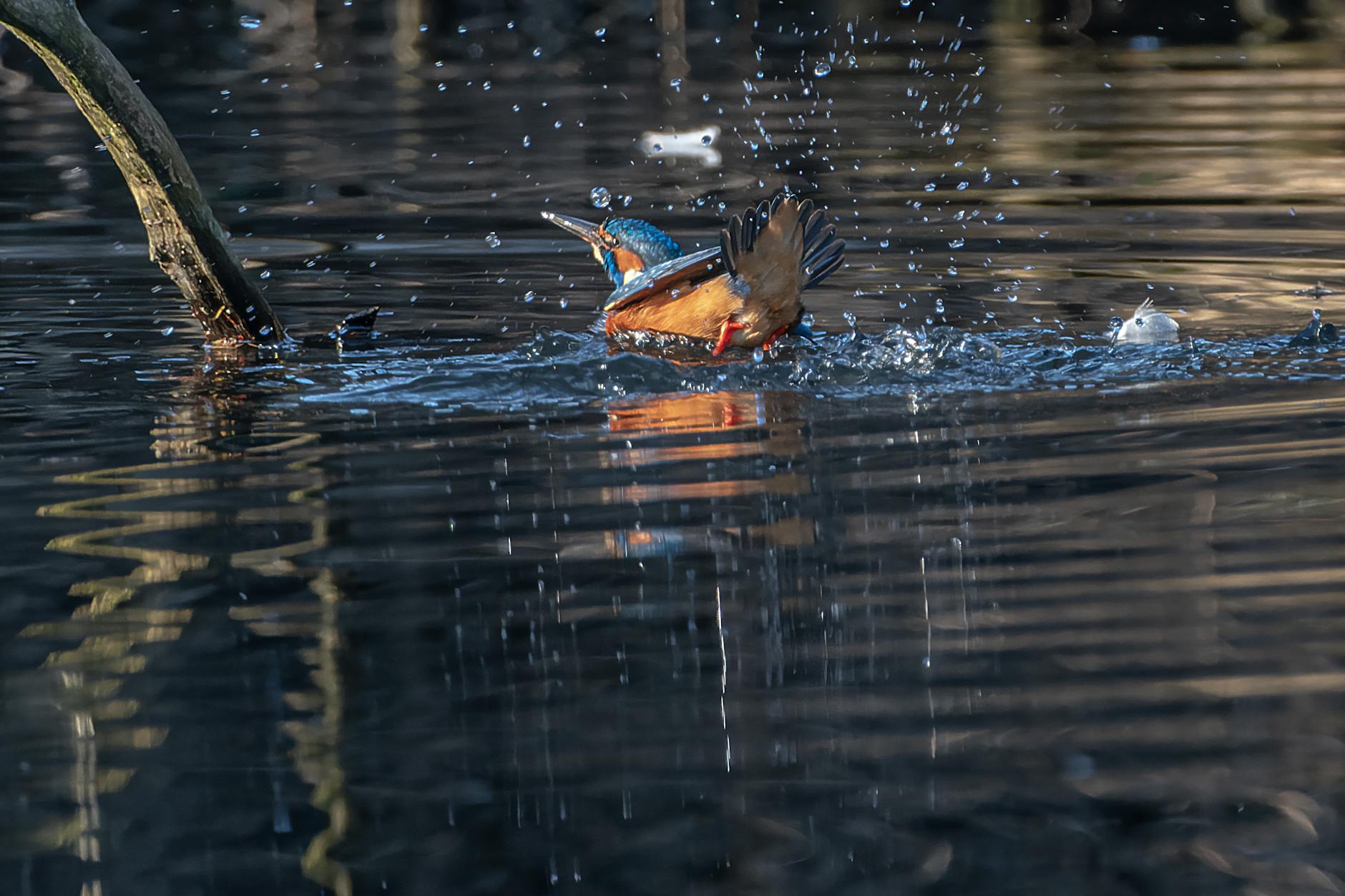The Incredible Diving Skills of Kingfishers: Anatomy, Techniques, and Environmental Adaptations
Kingfishers are remarkable birds, especially known for their impressive diving skills. Have you ever wondered how they manage to plunge into water at high speeds without injury? These birds have developed unique physical adaptations that allow them to dive headfirst with precision and control.
In this post, we’ll explore the anatomy and techniques that make kingfishers such efficient hunters. We’ll look at their genetic traits and environmental adaptations that contribute to their diving prowess. Prepare to uncover the science behind their extraordinary abilities and gain insights into how these vibrant birds thrive in their natural habitats. Whether you’re a birdwatching enthusiast or simply curious, this guide will deepen your appreciation for these fascinating creatures.
Understanding Kingfisher Anatomy
Kingfishers possess remarkable anatomical features that make them exceptional hunters. Their specialised body parts enable them to dive efficiently and capture fish with stunning accuracy. By examining their beaks, eye placement, and muscular structure, we gain insight into how these birds thrive in aquatic environments.
Specialised Beaks and Feet
Kingfishers have unique beaks designed for fishing. Their long, pointed bills allow them to spear fish with precision. This beak shape reduces water resistance, helping them dive swiftly into rivers and lakes. The geometry of their beaks also facilitates grabbing slippery prey effectively.
In addition to their beaks, kingfishers’ feet play a crucial role in their hunting strategy. Although they do not use their feet to capture fish directly, their feet are equipped with sharp claws that aid in gripping branches and stabilising during take-off. This stability ensures that they can launch themselves accurately into the water when targeting fish.
For more on how the kingfisher’s anatomy aids in fishing, check out Adaptations for Fishing: Kingfishers’ Specialized Anatomy.
Eye Placement and Vision
One of the most striking features of kingfishers is their eye placement, which allows for extraordinary depth perception. The eyes are positioned at the front of their heads, providing binocular vision. This configuration helps the birds accurately gauge distances, crucial for precise diving.
Kingfishers can focus on underwater prey with exceptional clarity. The shape of their lenses enables them to correct for the refraction of light as they dive, ensuring they have a clear view of their target. This visual prowess is vital for spotting fish beneath the water’s surface from above.
To further explore avian vision, visit Avian Eye Structure – Vision.
Muscle Structure and Strength
The muscle structure of kingfishers is specially adapted for powerful dives. They possess strong breast muscles that provide the thrust needed for rapid take-off and sustained speed during their descent. This muscular strength allows them to dive from heights and break through the water’s surface without injury.
Additionally, kingfishers’ lightweight skeletons reduce overall body mass, allowing for agile movements. They can accelerate rapidly, turning their bodies into bullets as they plunge towards their prey. This unique muscular arrangement and skeletal design enable kingfishers to execute their diving techniques efficiently, showcasing a beautiful blend of strength and agility.
For a deeper understanding of how kingfishers dive, see the article How kingfishers plunge-dive without hurting their brains.

Photo by Pixabay
Diving Techniques of Kingfishers
Kingfishers are known for their exceptional diving techniques, allowing them to catch fish efficiently. Their head-first dives are a spectacle of precision and speed, showcasing a mastery of mechanics that is fascinating to observe. Let’s explore the intricate mechanics of their dives, how they achieve remarkable speed and accuracy, and the adaptations that protect them from potential injuries.
Plunge-Diving Mechanics
When a kingfisher prepares to dive, it assumes a poised, focused posture. As it locks in on its target, the bird launches itself upwards before plunging downwards at high speed. This head-first technique is essential for increasing the likelihood of a successful catch.
During the dive, the kingfisher angles its body, minimising air resistance by forming a streamlined shape. The pointed beak leads the way, breaking the water’s surface first. This head-first entry reduces the impact on the bird’s body and allows for a swift transition from air to water. A fascinating aspect is the way they adjust their position mid-dive, using their wings to create a slight downward thrust, further enhancing their diving efficiency. For an in-depth look at how kingfishers manage these head-first dives, check out this article on how kingfishers dive head-first into water.
Speed and Accuracy
Kingfishers can dive at astonishing speeds, reaching up to 25 miles per hour (40 kilometres per hour). This remarkable velocity is crucial for catching fast-moving prey. But how do these birds balance speed with accuracy? Their exceptional eyesight plays a major role.
With forward-facing eyes, kingfishers possess excellent depth perception. This allows them to gauge distances accurately just before they dive. They can rapidly calculate the trajectory needed to reach their prey while accounting for water refraction—a skill that sets them apart in the avian world. Furthermore, the birds often hover briefly before diving, enabling them to make last-minute adjustments. Their success rate can reach 50% when diving from a branch, demonstrating their effective hunting strategy. For more information on kingfisher diving techniques, see Belted Kingfisher Fishing Techniques.
Avoiding Brain Injury
One of the most astonishing aspects of kingfishers is their ability to dive without harming their brains. When diving from great heights, the impact could be detrimental; however, these birds have evolved adaptations to mitigate risks.
Kingfishers possess a unique arrangement of structures within their skulls. Their brains are surrounded by a specialised fluid that acts as a cushion against sudden stops. Additionally, the shape of their beaks and their lightweight skeletons contribute to reducing the impact force upon entering the water. These adaptations are crucial in protecting the delicate tissues of their heads and brains. To further discover how kingfishers avoid concussions, refer to this insightful article on how kingfishers avoid concussions.

Photo by Siegfried Poepperl
Environmental Adaptations
Kingfishers exhibit remarkable environmental adaptations that play a crucial role in their exceptional diving skills. Their ability to thrive in various aquatic habitats enhances their hunting techniques. From the ideal conditions for diving to their agility in navigating obstacles, these adaptations ensure their success as skilled predators.
Preferred Habitat and Conditions
Kingfishers are most commonly found near freshwater bodies such as rivers, streams, lakes, and ponds. They thrive in environments where they can easily spot and catch aquatic prey. Their preferred habitats include:
- Steep Banks: Common kingfishers often dig their nests into steep banks made of soft soil, which helps protect their young from predators. These banks are typically located near fishing spots, ensuring easy access to food.
- Riffles: They favour areas with stream riffles, where the water is shallow and teeming with fish. The fast-flowing water creates ideal conditions for spotting and catching prey.
- Vegetation: Kingfishers are drawn to places rich in vegetation that provide cover and perches. Branches near the water enable them to scout for fish before diving.
Habitats can vary considerably, with some kingfishers adapting to human-modified areas, including parks and gardens. Their versatility allows them to thrive in diverse environments, making them one of the more adaptable bird species. For more information about their habitats, visit Kingfishers | Game Commission or explore Belted Kingfisher.
Adjusting to Obstructions
When diving, kingfishers often encounter various obstacles, from overhanging branches to water ripples. Their agility and keen observational skills enable them to navigate these challenges effectively:
- Preparation and Planning: Before a dive, a kingfisher assesses the area, identifying the best route to its target. This preparation allows for quick adjustments when obstacles are present.
- Sharp Vision: With exceptional eyesight, kingfishers can spot potential obstructions while in the air. Their depth perception enables them to judge distances accurately, ensuring they avoid collisions.
- Flexibility: If an obstruction arises unexpectedly, kingfishers can alter their trajectory mid-dive. They utilise their powerful wings not only for thrust but also for agile manoeuvring, enabling them to navigate swiftly through narrow openings.
This ability to adjust is vital for successfully catching prey, especially in environments rich with natural structures. For insights into how kingfishers adapt to obstacles while diving, check out this article on Belted Kingfisher Adapting To Obstacles During A Dive On A Fish.

Photo by Marek Piwnicki
The Remarkable Capabilities of Kingfishers
Kingfishers exhibit noteworthy skills that extend beyond their impressive diving abilities. Their adaptations not only help them hunt effectively but also play an essential role in their ecosystems. Let’s explore how these birds contribute to biodiversity and why they are significant within their habitats.
Importance in the Ecosystem
Kingfishers serve as apex predators in aquatic environments, regulating fish populations through their hunting activities. By preying on various fish species, they maintain a balance within the ecosystem. This predation helps ensure that no single species dominates, allowing for a healthier aquatic ecosystem.
- Biodiversity Regulation: As skilled hunters, kingfishers help manage fish populations. This regulation supports diverse aquatic life, benefiting various other species in the food web.
- Environmental Indicators: Kingfishers are sensitive to environmental changes. Their presence often indicates a healthy ecosystem, while their absence can signal ecological imbalances or pollution issues.
- Ecosystem Engineers: Some species of kingfishers contribute to habitat formation. Their nesting habits, often excavating burrows in riverbanks, create nesting sites for other species, fostering increased biodiversity.
For an in-depth look at the ecological importance of kingfishers, check out Diving into the World of the Belted Kingfisher.
Adaptations for Survival
Kingfishers showcase a suite of adaptations that enhance their hunting success and survival:
- Sharp Vision and Depth Perception: Their forward-facing eyes provide excellent depth perception, crucial for accurately gauging distances during dives.
- Streamlined Body Shape: Kingfishers have a streamlined body, allowing them to move efficiently through water. This shape reduces drag and increases their speed while diving.
- Specialised Beaks: Their long, pointed bills are perfect for catching fish. The beaks allow for precision strikes, enabling these birds to capture slippery prey.
To learn more about how these adaptations play a role in their hunting strategies, visit Adaptations for Fishing: Kingfishers’ Specialized Anatomy.

Photo by Shahzad Sk
Conclusion on Kingfishers’ Role
In summary, kingfishers are not just remarkable divers. They are vital components of their ecosystems, regulating populations and fostering biodiversity. Their unique adaptations for hunting demonstrate nature’s intricate design and the importance of preserving such species for environmental health. Their presence signifies a thriving aquatic ecosystem, making them essential birds to study and protect. To further understand their significance, explore the insights on The Fascinating World of Kingfishers.










